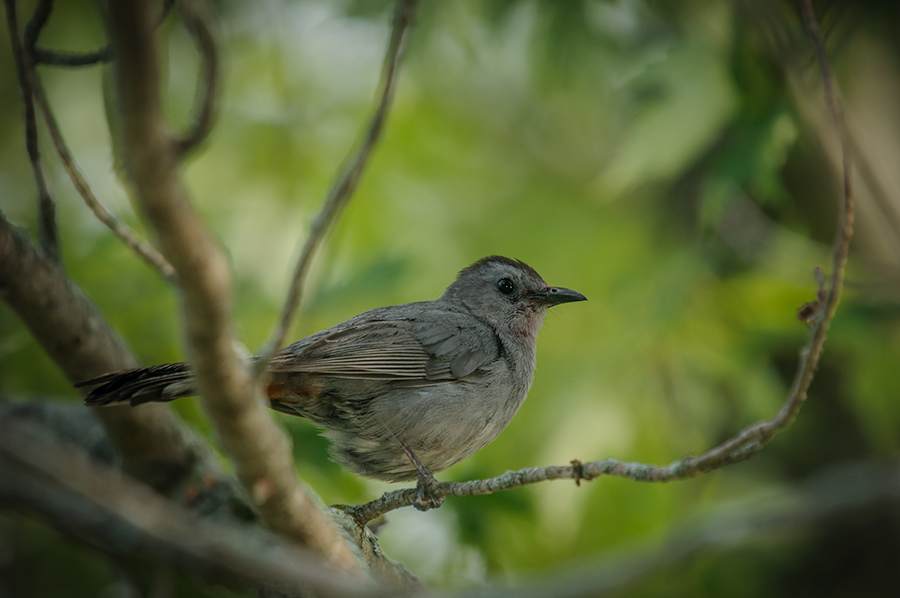
The Gray Catbird is not an uncommon bird in most parts of the United States during the summer. Its catlike “meow” call, that gave the bird its name, can be heard along forest edges, marshes, or streams. They often imitate the call of other birds, like jays, swallows, kingfishers, or grosbeaks (source: iBirdPro app). The catbird prefers low, dense vegetation and that’s why it is quite often not so easy to make a decent picture of this summer resident. Their gray color does not provide a lot of contrast in a low light situation, like in the dense bushes and trees as we have them here in Eastern Iowa, and focus is hard to obtain sometimes. I had countless tries to make a picture of the Gray Catbird during the last few years but this is the first time that I like the outcome. Not that there isn’t any room for improvement but I’m happy to present this image to you. Yes, this doesn’t have the “wow” factor, gray is probably not the favorite color of most people, but my concern as a nature photographer is to create awareness for all the species that need our attention in our local and global ecosystems.

